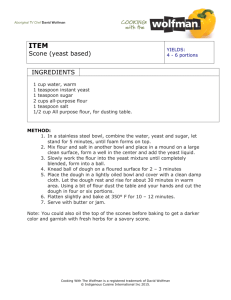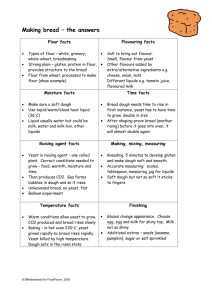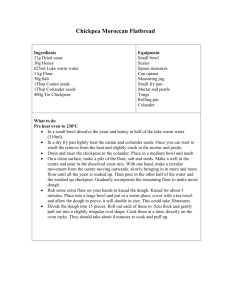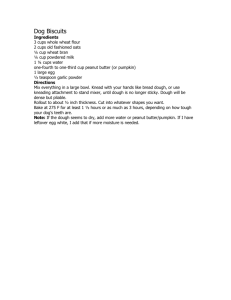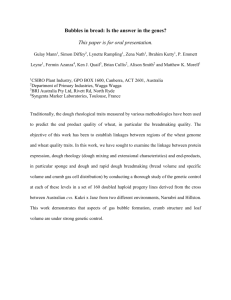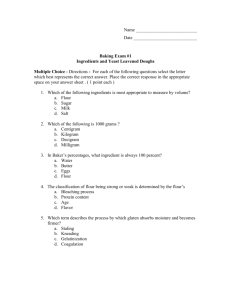Yeast Bread Study Guide
advertisement
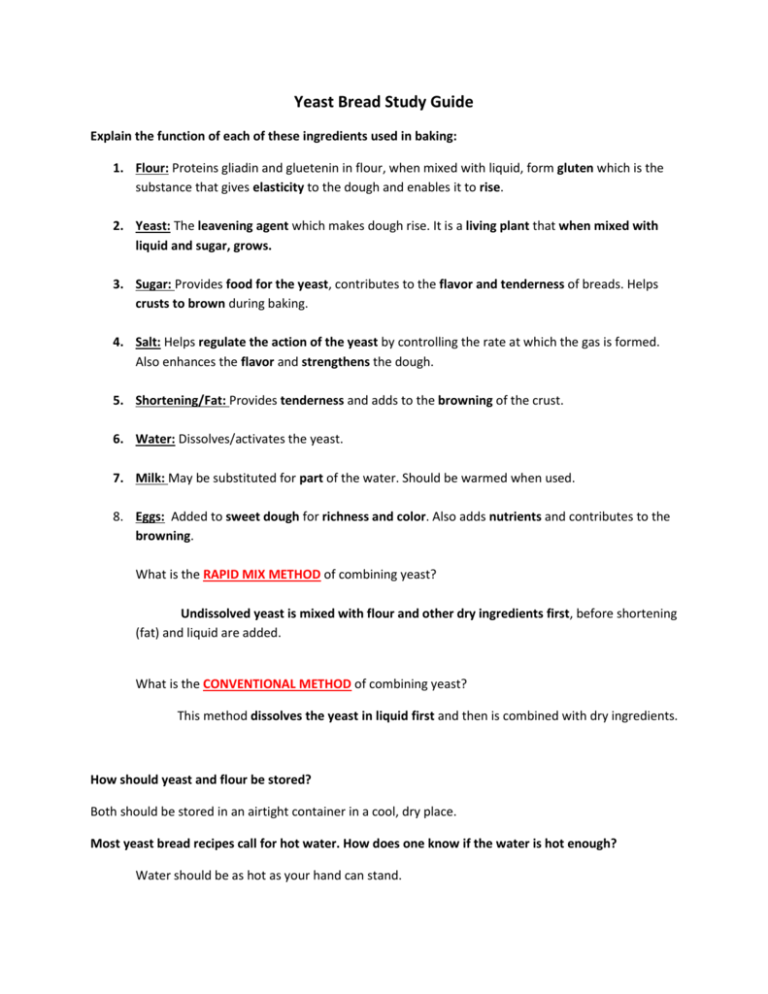
Yeast Bread Study Guide Explain the function of each of these ingredients used in baking: 1. Flour: Proteins gliadin and gluetenin in flour, when mixed with liquid, form gluten which is the substance that gives elasticity to the dough and enables it to rise. 2. Yeast: The leavening agent which makes dough rise. It is a living plant that when mixed with liquid and sugar, grows. 3. Sugar: Provides food for the yeast, contributes to the flavor and tenderness of breads. Helps crusts to brown during baking. 4. Salt: Helps regulate the action of the yeast by controlling the rate at which the gas is formed. Also enhances the flavor and strengthens the dough. 5. Shortening/Fat: Provides tenderness and adds to the browning of the crust. 6. Water: Dissolves/activates the yeast. 7. Milk: May be substituted for part of the water. Should be warmed when used. 8. Eggs: Added to sweet dough for richness and color. Also adds nutrients and contributes to the browning. What is the RAPID MIX METHOD of combining yeast? Undissolved yeast is mixed with flour and other dry ingredients first, before shortening (fat) and liquid are added. What is the CONVENTIONAL METHOD of combining yeast? This method dissolves the yeast in liquid first and then is combined with dry ingredients. How should yeast and flour be stored? Both should be stored in an airtight container in a cool, dry place. Most yeast bread recipes call for hot water. How does one know if the water is hot enough? Water should be as hot as your hand can stand. Fill in the blanks: An electric mixer is used for the first beating steps to start the development of gluten. Gluten is defined as the substance that gives elasticity to the dough and enables it to rise. Flour is gradually stirred in with a wooden spoon. If too much flour is added, the bread will become coarse and heavy. Kneading changes the dough from a sticky mass into satiny, smooth, non-sticky, elastic ball. Insufficient kneading results in undersized products which may collapse slightly during the longer periods of refrigeration. The kneading technique consists of a fold-push-turn action. Thorough kneading requires 5-10 minutes. If the dough has been kneaded enough it will spring back when pressed with your finger. After kneading, cover the dough with plastic wrap and a towel to keep it from drying out. The dough must rest for 20 minutes while the yeast goes to work. The grain, texture, and flavor begin to develop. At the end of the rest period, the dough has almost doubled in size and looks and feels much lighter. The warmer the room, the greater the expansion. Shaping the dough: Before it can be shaped, the dough must be “punched down” to remove excess air. To do this, press your fist into the center of the dough and fold the outside edges of dough into the indentation. Shape the punched down dough into a round ball and place it on the board. Before placing the shaped dough in the refrigerator, brush the surface of the dough with a light coating of oil. Place the covering loosely over the sides of the pan. The dough needs room to expand. The temperature of the refrigerator is extremely important in Cool Rise baking. 38-41 degrees is necessary. Baking: The final rising of the dough takes place during the first 10 to 15 minutes of baking. It is called oven spring. If the product is getting too brown, place a piece of foil loosely over the crust. To test for doneness, tap the crust lightly with your finger. If it sounds hollow, it is done. If not, return to oven for 5 minutes and test again. Take out of pan immediately and brush with melted margarine or butter. To slice use a bread knife in a gently sawing motion.
